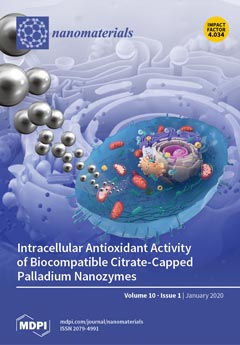This paper aims to investigate the synthesis, structure, and optical properties of SiO
2@YAG:Ce core–shell optical nanoparticles for solid state lighting applications. YAG:Ce phosphor is a key part in white light emitting diodes (LEDs), with its main functionality being the generation of
[...] Read more.
This paper aims to investigate the synthesis, structure, and optical properties of SiO
2@YAG:Ce core–shell optical nanoparticles for solid state lighting applications. YAG:Ce phosphor is a key part in white light emitting diodes (LEDs), with its main functionality being the generation of yellow light. Generated yellow light from phosphor will be combined with blue light, emitted from chip, resulting in the generation of white light. Generated light in LEDs will often be scattered by SiO
2 nanoparticles. SiO
2 nanoparticles are often distributed within the optical window, aiming for a more homogeneous light output. The main idea in this research is to combine these functionalities in one core–shell particle, with its core being SiO
2 and its shell being phosphor. In this study core–shell nanoparticles with different Ce
3+ concentrations were synthesized by a sol–gel method. Synthesized nanoparticles were characterized by X-ray diffraction (XRD), small angle X-ray scattering (SAXS) analysis, high resolution transmission electron macroscopy (HRTEM), Fourier transform infrared (FTIR), and photoluminescence spectroscopy. Luminescence characteristics of SiO
2@YAG:Ce core–shell particles were compared with that of SiO
2/YAG:Ce mixture composite, which is now used in commercial LEDs. Obtained results showed that core–shell nanoparticles have comparatively much better optical properties, compared to SiO
2/YAG:Ce mixture composite and can therefore be potentially used in LEDs.
Full article






